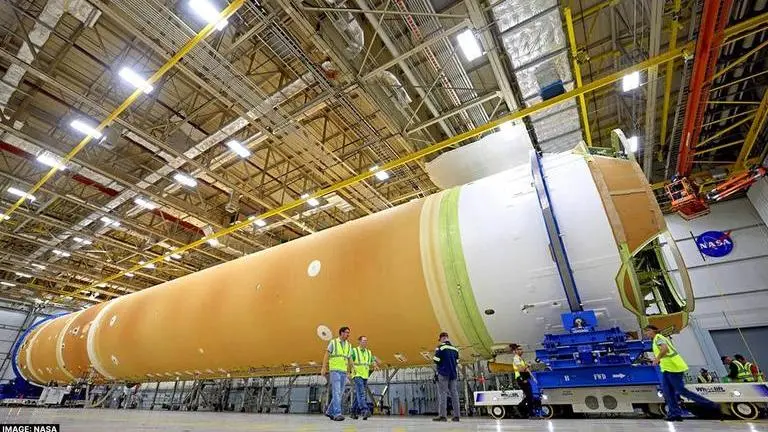Updated 21 March 2023 at 08:24 IST
NASA takes one step closer to Artemis 2, integrates all structures of rocket core stage
A team at the Michoud Assembly Facility of NASA in New Orleans integrated five large structures of the Space Launch System.
- Science News
- 2 min read

Getting one step closer to the highly anticipated Artemis II mission, a team at the Michoud Assembly Facility of NASA in New Orleans successfully integrated five large structures of the Space Launch System (SLS) rocket’s core stage. On March 17, a group of technicians came together to conjoin the engine section to the rocket stage. The next step that lies ahead of them is the integration of four RS-25 engines to the engine section.
According to NASA's official website, the engine section is situated beneath the 212-foot-tall core stage. It is the most challenging stage in terms of complexity, as it essentially helps power the entire mission. It also serves as an important attachment point for the RS-25 engines and two solid rocket boosters that release 8.8 million pounds of thrust during liftoff.
From construction to assembly, the Michoud facility is home to Artemis II's core stage. All the stages lead up to Artemis II, the first crewed Artemis mission that will shoot four astronauts into space for a trip around the moon, before bringing them back home.
One step closer to liftoff! The @NASAArtemis team at @NASA’s Michoud Assembly Facility has fully integrated all FIVE major structures of the @NASA_SLS rocket’s core stage. This rocket will send four astronauts around the Moon and return them home for the first time in 50 years! pic.twitter.com/Od30mFgYAc
— Bill Nelson (@SenBillNelson) March 20, 2023
All you need to know about Artemis II
The mission is significant because of its crew, which includes a woman and a person of color who will touch down on the Moon for the first time in the history of space exploration. NASA is set to announce the Artemis II crew at the beginning of April, according to Bill Nelson, the space agency's administrator.
Advertisement
"On April the third, we will announce the crew for the first mission back to the moon in over a half century. Four astronauts, three from America and one from Canada, will fly around the moon," Nelson said in a 'State of NASA' speech earlier this month. The mission that takes astronauts to the Moon comes for the first time in decades, after the renowned Apollo missions concluded in 1972.
Published By : Deeksha Sharma
Published On: 21 March 2023 at 08:24 IST
